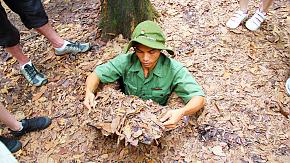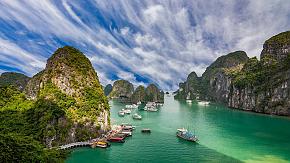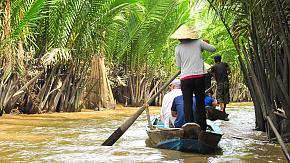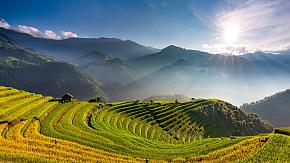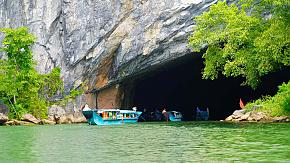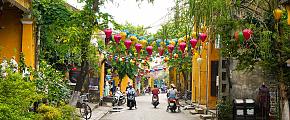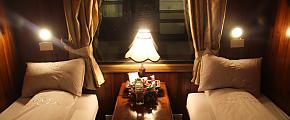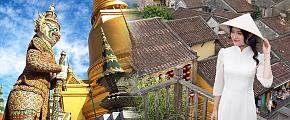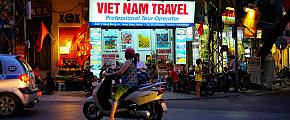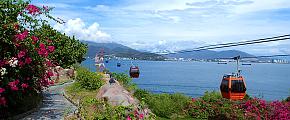Ho Chi Minh City: 9 Reasons Why It Is Worth Visiting
Formerly known as Saigon, Ho Chi Minh City was renamed in honor of the late North Vietnamese leader shortly after the end of the Vietnam War, although many people, including Vietnamese, still use the old name.
Despite its difficult past, today Ho Chi Minh City the largest city in Vietnam. It is also the country's financial and business center. Modern office blocks and hotels have sprung up, but the city still retains much of its past and certainly its Vietnamese identity. Here are 9 reasons why Ho Chi Minh City is worth visiting.
The Independence Palace / Reunification Palace
Address:135 Nam Kỳ Khởi Nghĩa, Quận 1
The palace lies at the southern end of a wide avenue with French-influenced architecture. A previous palace on the site was home to the French administrators, then renamed the Independence Palace after France left. It became the home and offices of the South Vietnamese presidents. The present palace was built between 1962 and 1966 to replace the older one. Following the end of the war, it was officially renamed the Reunification Palace, but both names are still in common use.
 The Independence Palace
The Independence Palace
Although it is still used for state occasions, the palace is open to the public most days. The State Banqueting Hall and the Conference Hall, both majestic and lavishly decorated, can be viewed, as can several others.
 State Banqueting Hall
State Banqueting Hall
What interesting thing is to go down to the basement where it is possible to visit the kitchen which supplied the banqueting hall. According to the sign at the entrance, the kitchen "was furnished with what was the most luxurious of modern equipment, of a standard for a five-star hotel". There was a smaller kitchen used on a daily basis to feed the president and his family.
The extensive grounds and gardens in which the palace is located are also worth a stroll around. Near the main entrance, the grounds display some military equipment from the war, but behind the palace is calm and peaceful.
The palace is open every day from 7:30 am to 12 noon (last tickets issued at 11:00 am) and again from 1 pm to 5 pm (last tickets 4 pm).
Notre-Dame Cathedral Basilica of Saigon
Address: 01 Công xã Paris, Bến Nghé, Quận 1.
A short stroll north from the Reunification Palace is the famous Cathedral Basilica of Our Lady of The Immaculate Conception, more commonly known as Notre-Dame Cathedral Basilica of Saigon. Built between 1863 and 1880, when Vietnam was colonized by the French, this cathedral is notable for the iconic statue of Mary standing on its east side.
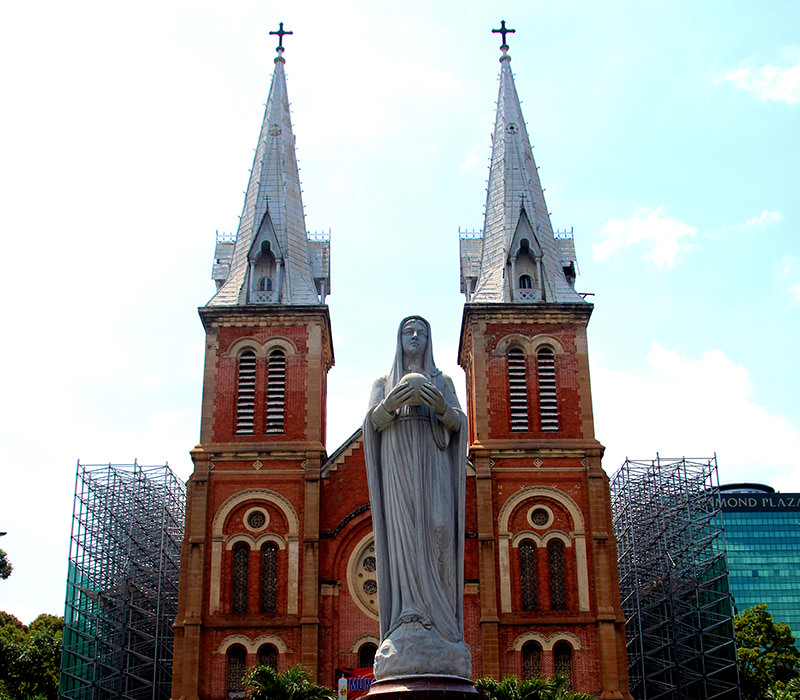 Notre-Dame Cathedral Basilica of Saigon
Notre-Dame Cathedral Basilica of Saigon
The cathedral was constructed entirely from materials shipped all the way from France, but the statue was made in Rome and shipped to Saigon in 1959.
Unfortunately for visitors, but good for the cathedral, it is currently undergoing conservation work and is covered in scaffolding. Restoration was originally expected to end of 2019, but the work carried out so far revealed unforeseen damage to the structure and now the difficult work is expected to last until 2027. This means it is not possible to enter the church; however, it is still very worthwhile visiting from the outside.
Saigon Central Post Office
Address: Số 125 Công xã Paris, Bến Nghé, Quận 1
Right beside the cathedral is another well-known Saigon attraction, Saigon Central Post Office, built just 6 years after the cathedral.
 Saigon Central Post Office
Saigon Central Post Office
Again built by the French, this is still a functioning post office but is more of a tourist attraction with its souvenir shops and money-changing facilities. That said, the souvenirs are well-made and the prices are reasonable.
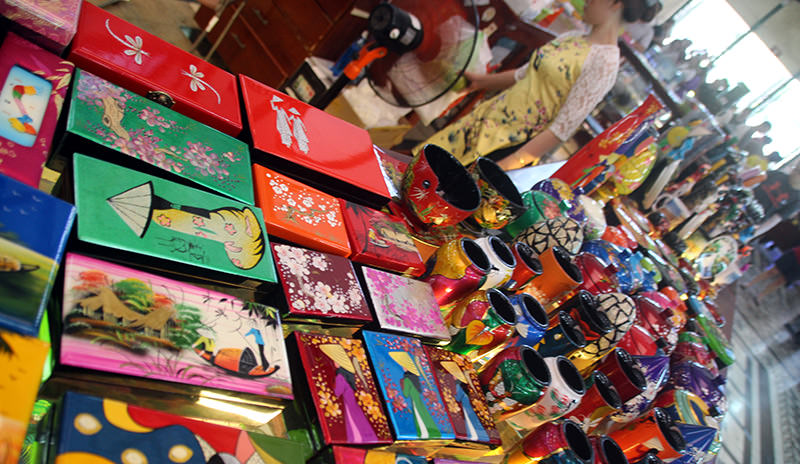 Post Office Souvenirs
Post Office Souvenirs
If you do visit the post office, when you leave, turn right, and you will see a short street full of bookshops. Most of the shops only sell Vietnamese books, but a few also have English. There are also a number of cafés. A good place to relax and pick up some refreshments.
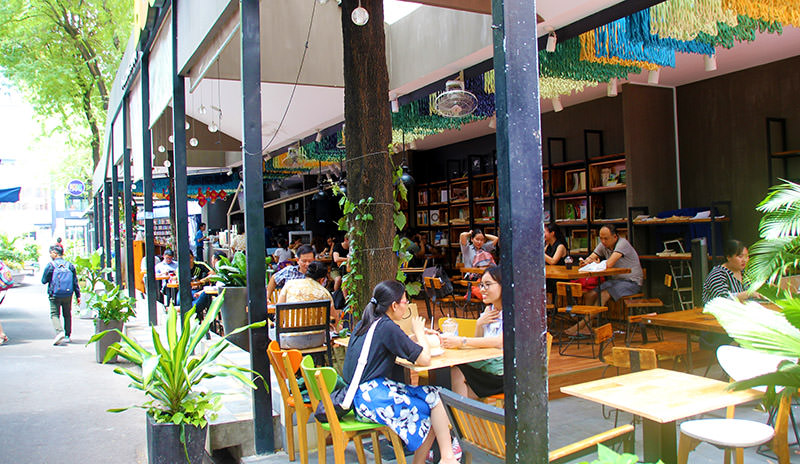 Book Café
Book Café
Between the Independence Palace and the cathedral is a small park area where it is common to take a rest in the shade of the many trees. Note that in Ho Chi Minh City all the trees are individually numbered.
Ho Chi Minh City Museum
Address: 65 Lý Tự Trọng, Bến Nghé, Quận 1
Other places of interest in the area include the Ho Chi Minh City Museum, located in Gia Long Palace to the east of the Independence Palace. This was the home to the presidents when the Independence Palace was being rebuilt.
 Ho Chi Minh City Museum (Gia Long Palace)
Ho Chi Minh City Museum (Gia Long Palace)
Today, it has exhibits showing the history of the city and the grounds feature automobiles from the French era. Inevitably, there is also some military hardware on show. Again, the gardens at the rear are worth a visit as are the hidden rooms under the palace which were used as a bomb shelter during the war.
Most exhibits are labelled in both Vietnamese and English.
War Remnants Museum
Address: 28 Võ Văn Tần, Phường 6, Quận 3
A short walk to the west of the Independence Palace is the War Remnants Museum. This is a large place, hosting bits of everything relating to both the war with France and then the Vietnam War.
 War Remnants Museum
War Remnants Museum
By the entrance you can find planes, tanks, anti-aircraft guns, etc, many being American hardware captured by the Viet Cong. Inside there are mock-ups of cells where POWs were held and caged. Shocking photographs of the effects of war. Shrapnel, weapons, etc.
Bến Thành Market
Also in District 1 is the famous Ben Thanh Market, formally established in 1859, but on the site of informal markets dating back another hundred years. The current building dates from 1912, but has been restored.
This colorful, busy market sells everything from vegetables and flowers, through fabrics and áo dài, the traditional Vietnamese long shirt was worn by women. It is the place to buy souvenirs and Vietnamese coffee but be prepared to haggle for the best price.
 Ben Thanh Flower Sellers
Ben Thanh Flower Sellers
Ben Thanh is also the name of the surrounding area, which is where almost every city bus operates from. This major transport center is largely under reconstruction to accommodate the new Ho Chi Minh City Metro system. Long been delayed, and it is still unclear when this will open. The work does mean that the area can get very busy and somewhat congested. As with much of District 1, your best bet is walking!
Củ Chi Tunnels
In the northern, rural suburbs of Ho Chi Minh City is the Củ Chi Tunnels complex used by the Viet Cong as their hidden headquarters and supply routes during the Vietnam War. They consist of 121 km / 75 miles of tunnels but also contain hospitals, conference rooms, and weapon arsenals. Today, parts of the system are open as a sort of museum, allowing visitors to explore some of the safer parts of the tunnels.
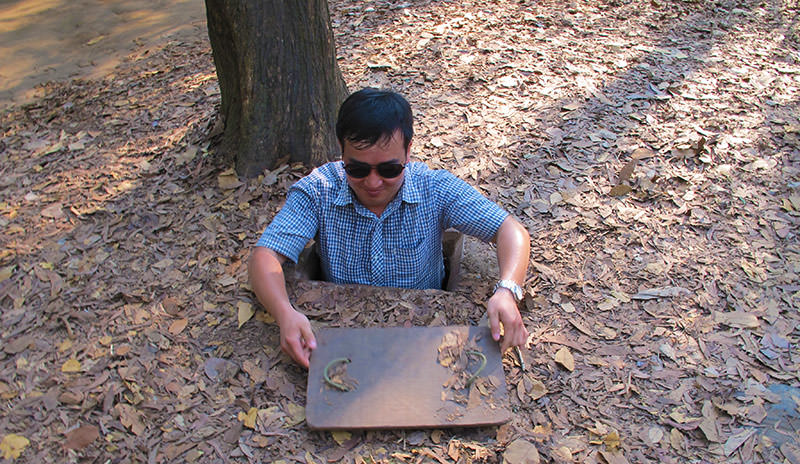 The Củ Chi Tunnels
The Củ Chi Tunnels
The Mekong Delta
Two to three hours' drive from Ho Chi Minh City, you arrive in the Mekong Delta, Vietnam's important agricultural storehouse. Rice and fruit are grown here and, of course, the delta supplies fish and seafood. Visitors to the area can enjoy the scenery from the river, explore little villages, and visit the famous floating markets, where the vendors sell their produce directly from their boats. You can even buy some cooked food from floating kitchens!
 A Coconut Seller
A Coconut Seller
Ho Chi Minh City Food
Ho Chi Minh City is awash with places to eat, from fine dining to street food. Not only Vietnamese food, but food from all over the world is available. Besides every country in Souteast Asia, I've seen Chinese, Indian, Syrian, Japanese, Russian, French, Italian and many more. There is a Hard Rock Café and, of course, all the global fast food companies have a presence. Here are just a few of my favorite Vietnamese dishes.
Bánh Mì
Bánh mì, the famous sandwich of Vietnam is available everywhere. Traditionally, it consists of a French-style baguette with liver pâté, mayonnaise, chili paste, liver sausage, char siu, pork floss, cucumber, coriander leaf/cilantro. However, other versions are available in some places, including vegetarian versions using tofu or egg.
You can find at least one place selling bánh mì within a minute or two's walk from your hotel. The only problem is where to buy it, not because of the lack of choice, but the over abundance. They are sold from bakery shops or just street vendors with a cart.
 Bánh mì
Bánh mì
Phở (pronounced "fuh")
Pho, Vietnam's noodle classic is also available all over the city. You are never far away from a phở restaurant. Many places have an extensive menu of only two items: phở bò, the most popular beef version and phở gà, which uses chicken.
 Phở bò
Phở bò
As almost always in Vietnam, this comes with a plate of salad herbs and bean sprouts for you to add to the broth and beef. There is also chilli sauce, raw garlic, and limes for you to squeeze into the broth.
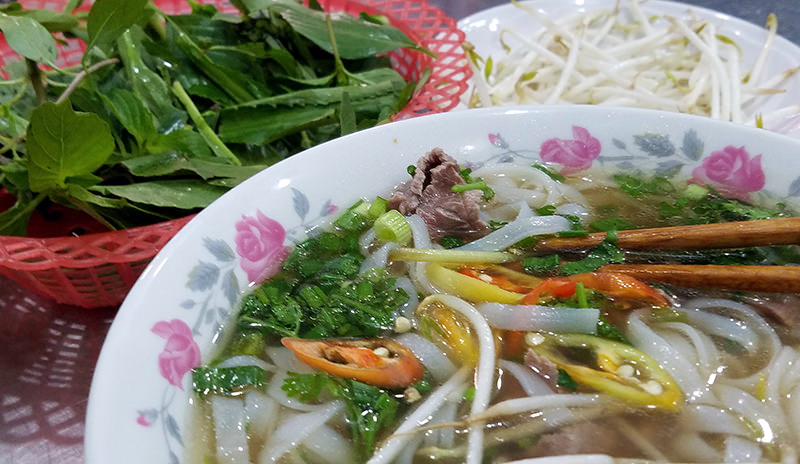 Phở with added vegetables
Phở with added vegetables
Bánh Xèo
Bánh xèo are Vietnamese pancakes made from rice flour with turmeric and water. They are often stuffed with bean sprouts and shrimp, but other versions exist, including vegetarian. Again these are normally served with a salad of green leaves and herbs. A favorite way to eat them is to roll the pancakes in rice paper discs, add the salad items of your choice, and then dip them in the sauce supplied.
 Bánh xèo with shrimp
Bánh xèo with shrimp
Hope this brief introduction whets your appetite for some time in Ho Chi Minh City. The rest of Vietnam is equally fascinating and HCMC is the perfect place from which to get to other parts of the country. But please have a look around the city before shooting off to the beach! You won't regret it.
Don't forget Odynovo can arrange tailored trips to Vietnam (and many other destinations around the world), all customized to meet your personal interests and requirements.
Quick Question
Related Posts You May Like
What Our Clients Say
Explore the latest verified reviews of Odynovo's travel services on Tripadvisor, Google, Trustpilot, Product Review and more trusted platforms.
SUBSCRIBE TO WIN A FREE TOUR
Subscribe to our newsletter for a chance to win a free 7-day tour to India! And more insider travel news, exclusive offers, and inspiration will be sent straight to your inbox. Check our previous newsletters and get some sparks.

